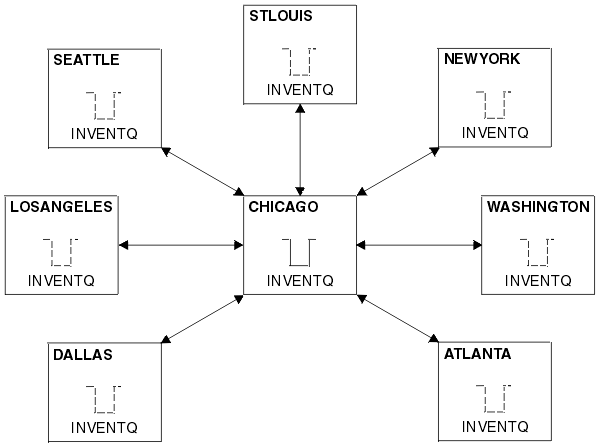Converting an existing network into a cluster
Convert an existed distributed queuing network to a cluster and add an additional queue manager to increase capacity.
Before you begin
In Setting up a new cluster through Moving a full repository to another queue manager you created and extended a new cluster. The next two tasks explore a different approach: that of converting an existing network of queue managers into a cluster.
Note: For
changes to a cluster to be propagated throughout the cluster, at least
one full repository must always be available. Ensure that your repositories
are available before starting this task.
Scenario:
- An IBM® WebSphere® MQ network is already in
place, connecting the nationwide branches of a chain store. It has
a hub and spoke structure: all the queue managers are connected to
one central queue manager. The central queue manager is on the system
on which the inventory application runs. The application is driven
by the arrival of messages on the
INVENTQqueue, for which each queue manager has a remote-queue definition.This network is illustrated in Figure 1.Figure 1. A hub and spoke network 
- To ease administration you are going to convert this network into
a cluster and create another queue manager at the central site to
share the workload.
The cluster name is
CHNSTORE.Note: The cluster nameCHNSTOREwas selected to allow cluster-receiver channel names to be created using names in the formatcluster-name.queue-managerthat do not exceed the maximum length of 20 characters, for exampleCHNSTORE.WASHINGTON. - Both the central queue managers are to host full repositories and be accessible to the inventory application.
- The inventory application is to be driven by the arrival of messages
on the
INVENTQqueue hosted by either of the central queue managers. - The inventory application is to be the only application running in parallel and accessible by more than one queue manager. All other applications continue to run as before.
- All the branches have network connectivity to the two central queue managers.
- The network protocol is TCP.